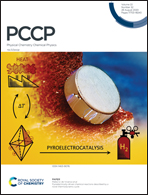Small crowder interactions can drive hydrophobic polymer collapse as well as unfolding
Abstract
Biomolecules evolve and function in the intracellular crowded environment that is densely packed with macromolecules. Yet, a microscopic understanding of the effects of such an environment on the conformational preferences of biomolecules remains elusive. While prior investigations have attributed crowding effects mainly to the excluded volume (size) effects of the crowders, very little is known about the effects exerted due to their chemical interactions. In this study, crowding effects of tri-alanine peptides on the collapse equilibria of generic hydrophobic polymer are investigated using molecular dynamics simulations. The role of weak, non-specific, attractive polymer–crowder interactions in modulating the polymer collapse equilibria is examined. The results highlight that crowding effects can lead to polymer compaction as well as unfolding depending on the strength of polymer–crowder interaction energy. Strongly interacting crowders weaken hydrophobic collapse (or unfold the polymer) at high volume fractions and induce polymer collapse only under dilute conditions. Weakly interacting crowders induce polymer collapse at all crowder concentrations. Interestingly, the thermodynamic driving forces for polymer collapse are remarkably different in the two cases. Strongly and weakly interacting crowders induce collapse by preferential adsorption and preferential depletion respectively. The findings provide new insights into the possible effects of interplay of intermolecular interactions in a crowded environment. The results have implications in understanding the impact of crowding in altering free energy landscapes of proteins.



 Please wait while we load your content...
Please wait while we load your content...